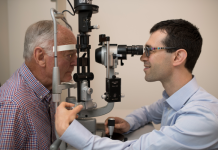Ashen skin depicts a complexion devoid of its usual healthy color, often displaying a pallid or grayish tone, indicating potential underlying health issues. Delving into its origins, identifying related symptoms, and implementing effective management techniques are crucial in addressing this unique skin condition.
Ashen Skin: Unveiling Its Characteristics
Ashen skin manifests as a distinct lack of vibrancy in the skin’s appearance, persisting beyond temporary changes due to external factors. This altered complexion may coincide with sensations of weakness, fatigue, or dizziness. Its pallid hue serves as a visual cue, indicating potential internal irregularities.
Exploring Underlying Causes
Various factors contribute to the emergence of ashen skin. Anemia, stemming from deficiencies in essential nutrients like iron or vitamin B12, stands as a common catalyst. Additionally, impaired blood circulation due to cardiovascular issues, shock, or environmental influences can lead to this skin condition. Chronic ailments such as hypothyroidism or specific infections might also manifest as ashen skin.
Seeking Professional Assessment and Diagnosis
Persistent ashen skin warrants evaluation by healthcare professionals. Diagnosis involves a comprehensive examination, encompassing medical history reviews, physical assessments, and possibly specialized tests like blood analysis. Accurate diagnosis forms the basis for crafting a tailored treatment plan.
Tailored Treatment Approaches
Efficient management of ashen skin revolves around addressing its root cause. Treatment strategies may encompass supplementing deficient nutrients, medications to enhance blood circulation, or managing primary health conditions. A holistic approach that blends medical interventions with lifestyle modifications often yields optimal outcomes.
Embracing Holistic Skincare Practices
In addition to medical interventions, lifestyle adjustments play a pivotal role in managing ashen skin. Maintaining adequate hydration, consuming a nutrient-rich diet, ensuring sufficient rest, and adhering to appropriate skincare routines significantly contribute to skin health. Safeguarding the skin from harsh environmental elements can also aid in alleviating ashen skin symptoms.
Conclusion: Prioritizing Skin Health and Overall Well-being
Ashen skin serves as more than a superficial concern; it often mirrors deeper health issues. Understanding its indications, seeking professional guidance, and adopting a comprehensive approach to health and skincare are essential. Prioritizing overall well-being not only revitalizes the skin but also fosters a healthier, more vibrant lifestyle.







